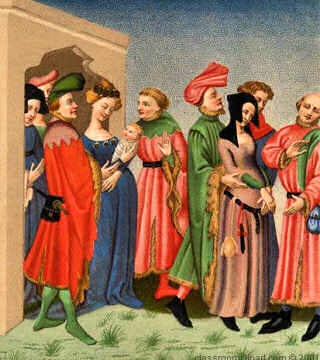Other changes in our adaptation of ROMEO & JULIET
There isn’t really any such thing as a “spoiler” in a well-known story, but you might want to read this post after you see the show, so that its impact isn’t diminished by anticipation.
——————–

- Shakespeare calls for a “Chorus” to speak the opening speech. But he abandons that convention after the first act and Chorus disappears. With another tip of the hat to Larry Life’s 1976 production, I severely edited the prologue and gave the lines to Friar Lawrence, who also ends the play. (The final quatrain in Shakespeare’s version is spoken by the Prince. But I find it more emotionally satisfying coming from the Friar.)
2. The Capulet servant in Act I, Scene 1 is supposed to be called Samson. But he (and Gregory) disappear, never to be seen again. However, Peter has a recurring small role as the clownish, illiterate servant, following the Nurse around, delivering invitations for Capulet, etc. And in the scene in which Mercutio teases the Nurse, Peter protests that he is always ready to fight “if the law be on my side”…which was a primary concern for the servant in Scene 1. Convinced therefore, that Samson is actually Peter, I made the change.

I did not want Romeo carrying a sword at his wedding. He goes directly from there to the fight with Tybalt, so we solved it this way:


